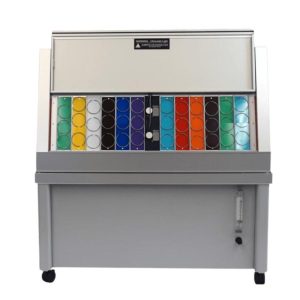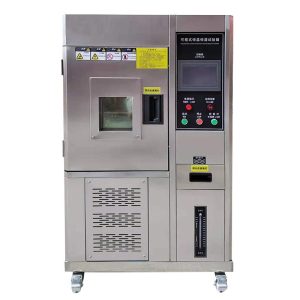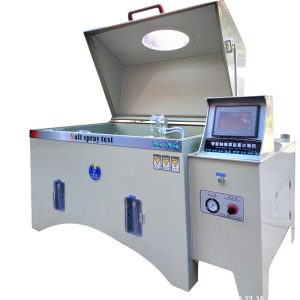A brief analysis of epoxy weather resistance and its testing methods
Epoxy resins are widely used in coatings, adhesives, composites and other fields, and they need to be able to resist the erosion of various factors such as ultraviolet radiation, temperature change, humidity, chemical substances and mechanical wear for a long time, so it becomes very important to measure the weather resistance of epoxy materials. Weather resistance testing can help evaluate the stability, physical properties, and appearance quality of epoxy materials under these conditions to ensure that they can maintain good performance and longevity in applications.
Accelerated aging test
Use simulated accelerated aging equipment, such as UV aging test chamber, constant temperature and humidity chamber or salt spray test chamber, to expose the epoxy material samples for a certain period of time. The weather resistance of epoxy materials is evaluated by observing phenomena such as appearance change, color stability, surface cracking, peeling, or other shape changes.
What is UV aging test chamber?
Uv aging test chamber is a kind of equipment used to simulate the ultraviolet radiation of sunlight and humid and hot conditions in natural environment. It can accelerate the aging process of materials by emitting UV light sources and providing a humid and hot environment to evaluate the weather resistance and durability of materials under actual use conditions. Uv aging test chamber is widely used in materials science, coating, plastic, rubber, textile, automobile, building materials and other industries, for studying and evaluating the discolouration, deterioration, cracking, embrittleness and other performance changes of materials, so as to guide product design, material selection and quality control. By simulating UV radiation and humid and hot conditions, UV aging test chambers can help manufacturers and research institutions more accurately predict and improve the life and performance of materials, and improve the quality and reliability of products.

A brief analysis of epoxy weather resistance and its testing methods
What is a constant temperature and humidity box?
A constant temperature and humidity chamber is a device used to control and maintain constant temperature and humidity conditions. It is commonly used in laboratories, research institutions and industrial production processes for long-term constant temperature and humidity environmental testing or storage of items, samples or products. Constant temperature and humidity chamber with precise temperature and humidity control system, can maintain stable temperature and humidity levels within the set range. Such equipment is often used in material property testing, biological experiments, seed cultivation, drug storage and other fields to simulate specific environmental conditions and explore the behavior and performance changes of substances under different temperatures and humidity. The application of constant temperature and humidity chambers helps to study and evaluate the stability, reliability and adaptability of materials, products or biological samples under different environmental conditions, thus providing valuable data and guidance for scientific research, quality control and product development.

What is a salt spray test chamber?
Salt spray test chamber is a device used to simulate salt spray environment and is often used to evaluate the resistance of materials and coatings to salt spray corrosion. It exposes test samples to a high concentration of salt spray environment by producing atomization of saline solution to simulate Marine, industrial or other conditions with high salinity environment. Salt spray test chambers are widely used in automotive, aerospace, electronics, Marine, coatings and corrosion protection industries to evaluate the corrosion resistance of products in harsh environments. By observing and measuring the degree of corrosion on the surface of the sample, such as rust, oxidation, coating peeling, etc., the weatherability and protection performance of the material can be evaluated. The use of salt spray test chambers helps guide product design, material selection, and quality control to improve product durability and reliability.

A brief analysis of epoxy weather resistance and its testing methods
Other performance tests
Physical performance test
Measure the physical properties of epoxy material samples, such as strength, hardness, impact resistance and wear resistance, etc. By comparing the test results at different time points, whether the physical properties of epoxy materials are affected by weathering conditions is evaluated.
Determination of color
Using a spectral measuring device or a colorimeter, the color parameters of the epoxy material samples, such as brightness, hue, and color difference values, are measured. By comparing the measurements at different time points, the color stability and the degree of change of the epoxy material can be evaluated.
Chemical property analysis
Chemical analytical methods, such as infrared spectroscopy (FTIR) or nuclear magnetic resonance (NMR), are used to detect changes in the chemical properties of epoxy material samples under weather resistant conditions. Observe whether changes in molecular structure, breaks in chemical bonds, or the formation of decomposition products occur.
Surface property measurement
Use equipment such as surface roughness tester or microscope to evaluate the surface quality and flatness of epoxy material samples. Observe whether there are scratches, damage or other surface defects to judge its weather resistance and surface protection performance.
A brief analysis of epoxy weather resistance and its testing methods
bservation of form
Using microscope or fracture surface observation, check the fracture morphology, cracking and deformation characteristics of epoxy material samples, and evaluate their weather resistance and fracture toughness.
Through the above methods, the weather resistance of epoxy materials can be comprehensively evaluated, and the degree of stability, physical properties and appearance quality maintenance under different environmental conditions can be understood. This helps to improve the quality and service life of epoxy materials, ensuring that they can maintain good performance and reliability for a long time in applications such as coatings, adhesives, composites, etc. Specific test methods and standards may vary for different epoxy material types and application requirements. Before conducting tests, it is recommended to refer to relevant standards and specifications and consult professional laboratories or testing institutions.
